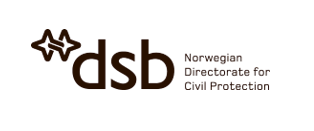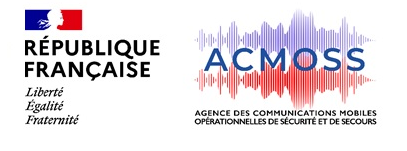
Preparations for the national broadband network in the Czech Republic are in the preliminary feasibility study phase as of June 2023. In April 2023, the State Security Council approved the 3rd progress report, taking into account new requirements responding primarily to current geopolitical risks. Subsequent steps are focusing on market surveys and the preparation of technical specifications, while the first tenders could be issued at the end of 2024 at the earliest.

ASTRID is preparing the future mission critical mobile network for Belgian public safety responders. The new broadband network will adopt a Multi-Operator Core Network (MOCN) architecture with 5G technology. This means that ASTRID will use the existing masts and antennas of one or more commercial telecom operators, while the core network will be built and managed by ASTRID. This set-up safeguards the autonomy, the sovereignty, and the confidentiality of the PPDR users for mission critical services.


Nødnett, is the Norwegian nationwide TETRA-based emergency network. The Norwegian, Swedish and Finnish TETRA-networks are connected and provide cross border services to the users. The MCX system will be managed directly by DSB on behalf of the Norwegian Government. As part of the preparations for the procurement of the new solution, DSB has invited market actors to give their input regarding a possible solution for the provision of MCX services in the new Nødnett.


With narrowband networks slowly becoming obsolete in France, a great diversity of users will soon have access to enriched communications enabling multi agencies interoperability. The Réseau Radio du Futur (RRF) program will replace PS narrowband network by a 4G/5G broadband network and an MCX services platform. Contracts have been awarded in October 2022 and Go-Live is expected in June 2024, before Paris Olympic Games.

Currently Estonia uses TETRA as our PPDR network. With the next generation broadband solution, we are in an analysis phase. There is some initial migration roadmap in place. No detailed information is available yet.

Next-generation communication system for Public Safety Services in The Netherlands is offered by the NOOVA project (2019-2034). Its objectives are to design a new mission critical communication system for the PPDR-organizations in The Netherlands, deliver on the promises of NextGen mobile broadband communications for our users and use the RAN of one or more MNO’s, with a government-owned core.

SIRDEE (Sistema de Radiocomunicaciones Digitales de Emergencia del Estado) is a shared communications network, and it provides voice and data services to more than 150,000 users. Main users of the network are Policía Nacional and Guardia Civil.
On 20 October 2021, the Swedish Government instructed the MSB, together with the Swedish Transport Administration, to plan and prepare further development and establishment of Rakel Generation 2. The transition to the new communication system will occur gradually over the years 2028-2029, and the system will work in parallel with the present Rakel. The cross border cooperation currently implemented between Norway, Sweden and Finland must be maintained in the next-generation system and during the transition period between the current Rakel and Rakel G2.


The Special Telecommunications Service is the central specialized body with legal status, which organizes, conducts, carries out, controls and coordinates the activities in the field of special telecommunications for public authorities in Romania and for other users provided by the law.
In this capacity, STS is the technical administrator of the national TETRA network. This network is in mid-life upgrade process which will introduce new features (SwMI with geographic redundancy, extended network radio coverage and capacity, ethernet backhauling, interconnection with 3GPP networks)
The mid-life upgrade process will be completed this year.

Finnish mission critical authorities and other public safety users will be provided with a variety of mission critical mobile broadband services during 2020 decade. We have a customer-oriented approach to developing next generation Virve 2 services. We act as a service operator with own 4G and 5G MOCN core network, cooperating with our partners to offer extensive and reliable services. During the migration phase, the present Virve radio network will work seamlessly alongside the Virve 2 services until the end of 2028.
Page coming soon.


The National Authority for Public Security in Italy is the Minister of the Interior, responsible for public order and security and for the coordination of police forces. Enforcement of public order and security policies is entrusted to the Department of Public Security, headed by the Chief of Police – Director General of Public Security.
Department of Public Security is deploying a nationwide broadband mission critical mobile radio network, capable of providing mobile video surveillance services, mission critical group communications and access to police databases for Italian police forces.

Comreg, the Irish Telecommunications Regulator, Office of the Government CIO (OGCIO) have agreed that PPDR Broadband networks will be delivered as a hybrid model of commercial and private networks. Three small bands of spectrum in Bands 28, 68 and 88 have been proposed and OGCIO are testing these to identify the best fit for a hybrid PPDR network.
Ireland has received funding under The Recovery and Resilience Facility (RRF) which is the centrepiece of NextGenerationEU– this funding support the roll out of a Low Latency National Platform (LLNP). With the LLNP completion, the state will have a platform consisting of a private Low Latency Network and Edge compute nodes hosting its own 4G and 5G distributed Core and MCX solutions.
Page coming soon.
Page coming soon.
